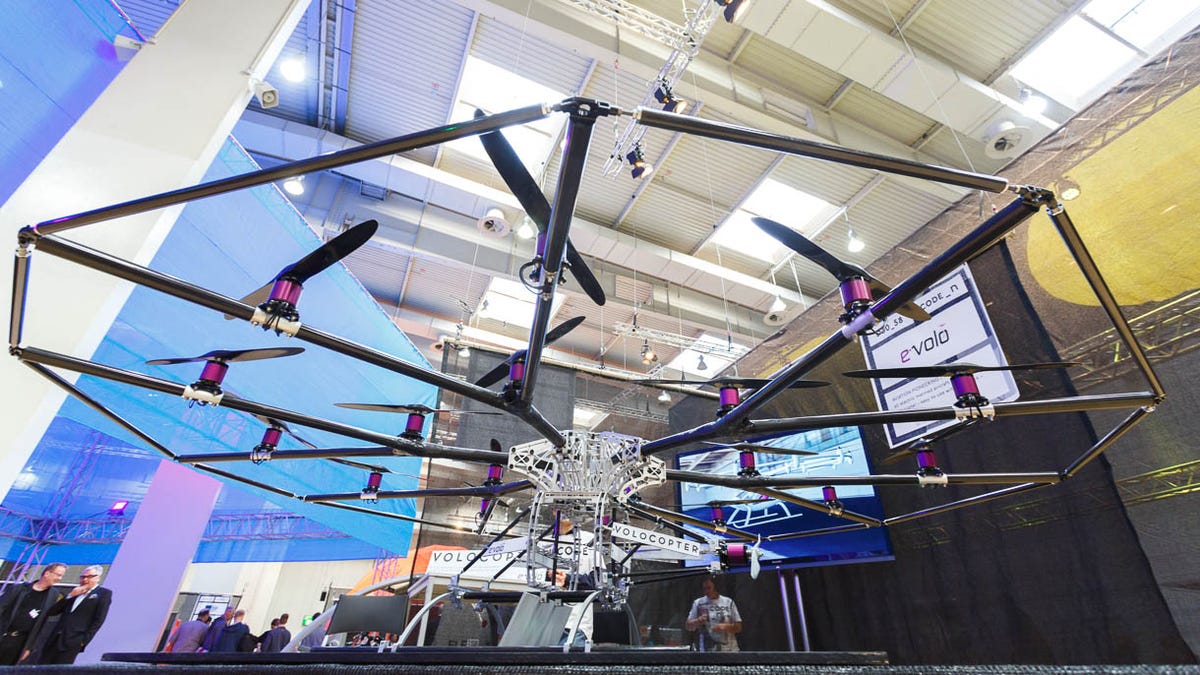18 rotors and up: E-volo shows personal helicopter prototype
The German startup hopes to build an 18-rotor personal "multicopter" by 2015 and is showing a prototype at the CeBIT trade show.
HANOVER, Germany--Enough with the cutesy little quadcopter drones.
Instead of pint-sized four-rotor aircraft good enough to experiment with swarm dynamics or to carry small cameras, German startup E-volo is building an 18-rotor model that can carry a human passenger. It's the latest attempt to realize the dream of the flying car.
The Karlsruhe-based company plans to begin selling its VC200 in 2015, said Jeromin Schwenk, a student with the Karlsruhe University of Applied Science who's one of about 60 people working on the project.
"It's going to be the personal aircraft for everyone," Schwenk said, speaking at the CeBIT trade show here.
The VC200 is an electric "multicopter" with enough battery power to fly 15 minutes, but an on-board fuel engine will recharge its batteries to extend flying time to one hour, he said.
For now, though, the company is focusing on prototypes. At CeBIT, it's showing an 18-rotor, 14-kilogram model called the VC25 that can carry a payload of 25 kilograms. So far it's cost 5,000 euros to build, but it's not done, Schwenk said.
The company also has built a larger lightweight prototype, the VC1, that successfully carried a human into the air -- but it lacked any sort of housing for the pilot, flew only for about 90 seconds, and had primitive landing equipment in the form of an inflatable gymnastics ball.
The design mounts rotors on struts that fan out from the aircraft's fuselage. A central computer coordinates all the rotors, and each rotor has its own microcontroller, too. Although a pilot will be able to control it with a simple joystick, E-volo expects to include a navigation system that flies the aircraft on its own.
The design is dramatically different from conventional helicopters. Those use a complicated mechanism to tilt rotors as they circle around and a tail rotor to keep the fuselage from counter-rotating.
The E-volo design, like tiny quadcopters, adjusts the orientation of the aircraft by spinning rotors at different speeds. For example, to tilt the aircraft forward to move in that direction, the rear rotors spin faster.


